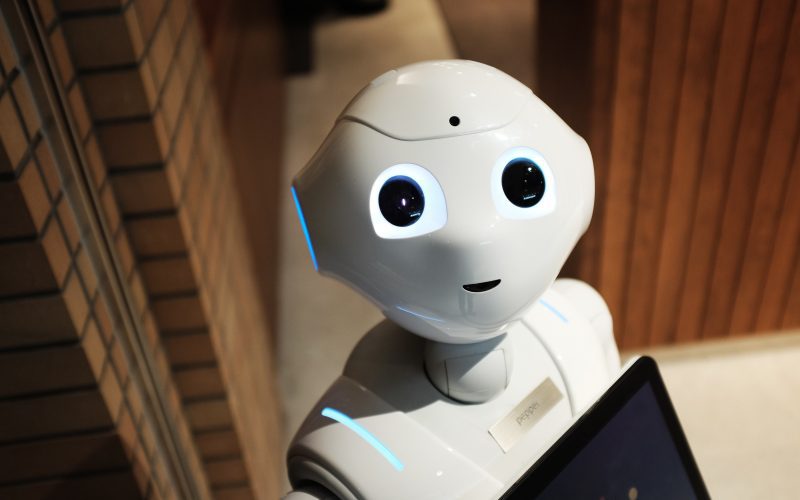As we continue to witness the rapid advancements in technology, it’s no surprise that robots are increasingly becoming a common feature in workplaces across various industries. While automation brings about unparalleled efficiency and accuracy, there are also concerns surrounding job displacement and the impact on human workers. So, can we coexist with robots in the workplace? In this blog post, we explore the pros and cons of automation and delve deeper into what this means for our future workforce. Whether you’re an employee or employer looking to adapt to these changes or simply curious about how robotic innovations affect us all, read on!
What are robots?
Robots are machines that can be programmed to carry out a set of tasks. They are often used in manufacturing and industrial settings to automate repetitive or dangerous tasks. In recent years, there has been a growing trend of using robots in office and service-oriented workplaces.
There are several advantages to using robots in the workplace. First, they can help to improve efficiency and productivity by taking on tasks that would otherwise be performed by human workers. For example, robots can be used to sort and assemble products on an assembly line. Second, robots can help to improve safety in the workplace by performing tasks that could be hazardous for human workers, such as handling hazardous materials or working in dangerous environments.
There are also some drawbacks to using robots in the workplace. One concern is that they may lead to job loss as they replace human workers in certain tasks. Another concern is that they may not be able to replicate all of the capabilities of human workers, such as creative problem solving or social interaction. Additionally, some people may feel uncomfortable working alongside robots due to concerns about their safety or the possibility of them becoming sentient and taking over the world!
The pros of automation in the workplace
The rise of automation in the workplace is often seen as a threat to jobs. However, there are many potential advantages to automation that should not be ignored.
One of the biggest advantages of automation is increased efficiency. Automated systems can work faster and more accurately than humans, which can lead to increased productivity and output. Additionally, automated systems can often work around the clock without getting tired, meaning that they can increase output even further.
Another big advantage of automation is improved safety. Automated systems can eliminate or reduce many of the risks that humans face in hazardous environments. For example, automated welding robots are often used in place of human workers in order to prevent exposure to harmful fumes and sparks.
Finally, automating repetitive tasks can free up employees to focus on more creative and strategic work. This can lead to better job satisfaction for workers as well as improved organizational performance.
The cons of automation in the workplace
The cons of automation in the workplace are:
1. Job Losses: One of the most well-known and feared effects of automation is job losses. As machines increasingly takeover tasks that humans currently perform, there will be a decrease in the demand for human workers. This could lead to large-scale unemployment, as there will be fewer jobs available for people to do.
2. Widening inequality: As automation leads to job losses, it could also widen the gap between the rich and the poor. Those who own the automated machines will become richer, while those who are replaced by them will become poorer. This could lead to increased social unrest and even conflict.
3. Dependence on machines: If we rely too much on machines, we could become dependent on them. This could lead to problems if the machines ever break down or malfunction, as we would not know how to fix them or perform the tasks they do ourselves.
How can we coexist with robots in the workplace?
How can we coexist with robots in the workplace? It’s a question that has been asked since the dawn of the industrial revolution, and one that is only becoming more relevant as technology advances. There are pros and cons to automation, but ultimately it comes down to how we as humans adapt to change.
The pros of automation are increased efficiency and productivity, lower costs, and less need for human labor. The cons are loss of jobs, increased inequality, and decreased social interaction. But there are ways to mitigate the negative effects of automation if we’re willing to adapt.
We can retrain workers for new jobs that will be created by automation. We can provide a safety net for those who are displaced by automation. And we can actively create policies that encourage companies to use automation in a way that benefits all workers, not just shareholders.
The key is to remember that change is inevitable, but how we deal with it is up to us. We can either resist new technologies and be left behind, or embrace them and find ways to use them for our benefit.
Conclusion
Automation has the potential to greatly change our lives and the way we work, but there are still many challenges ahead. The key is to find a balance that allows us to benefit from robots while also protecting jobs and ensuring safe working conditions for humans. We must be vigilant in monitoring how automation affects our society so that we can ensure it is used responsibly and with respect for its workers. With thoughtful implementation, robot coexistence in the workplace could prove beneficial both economically and socially.












